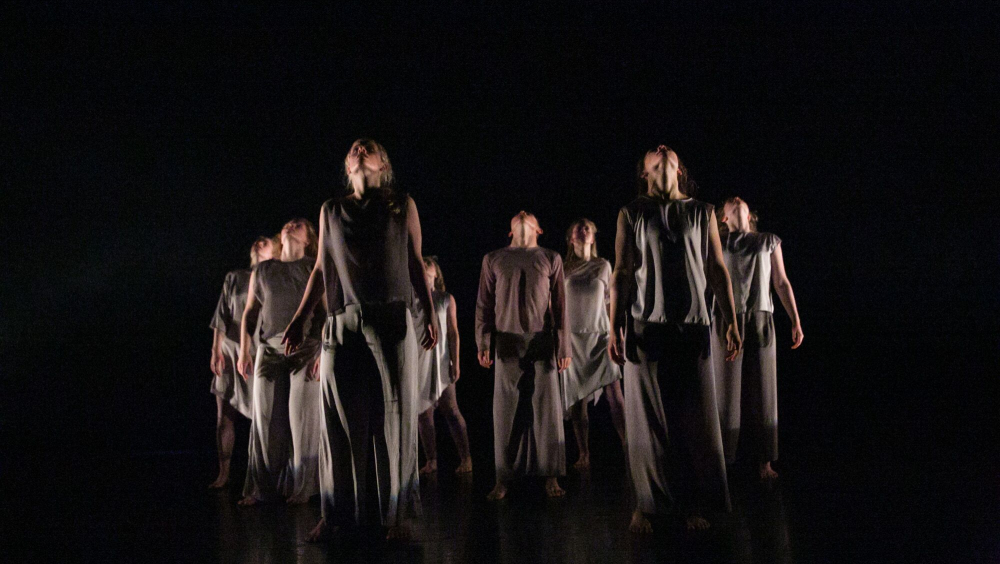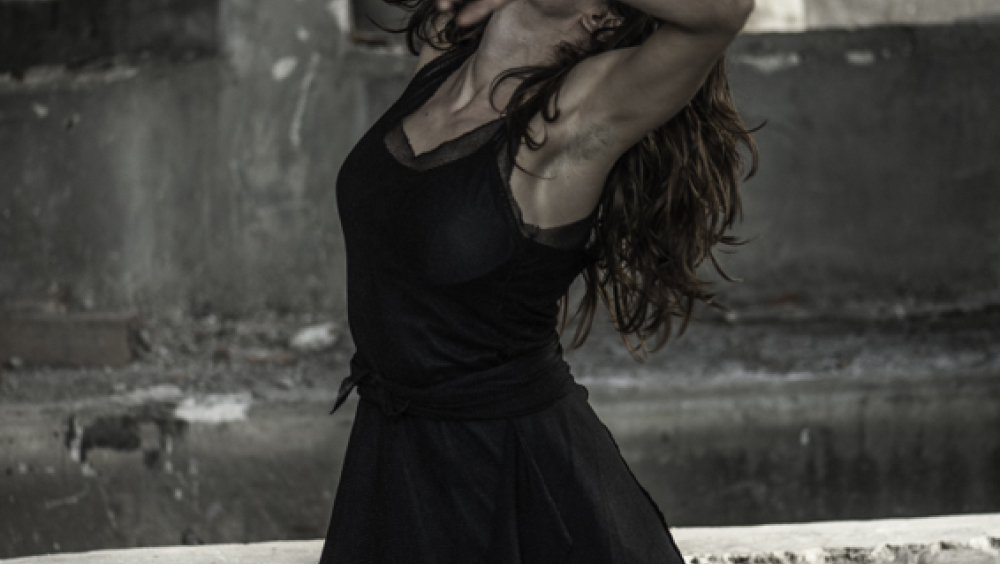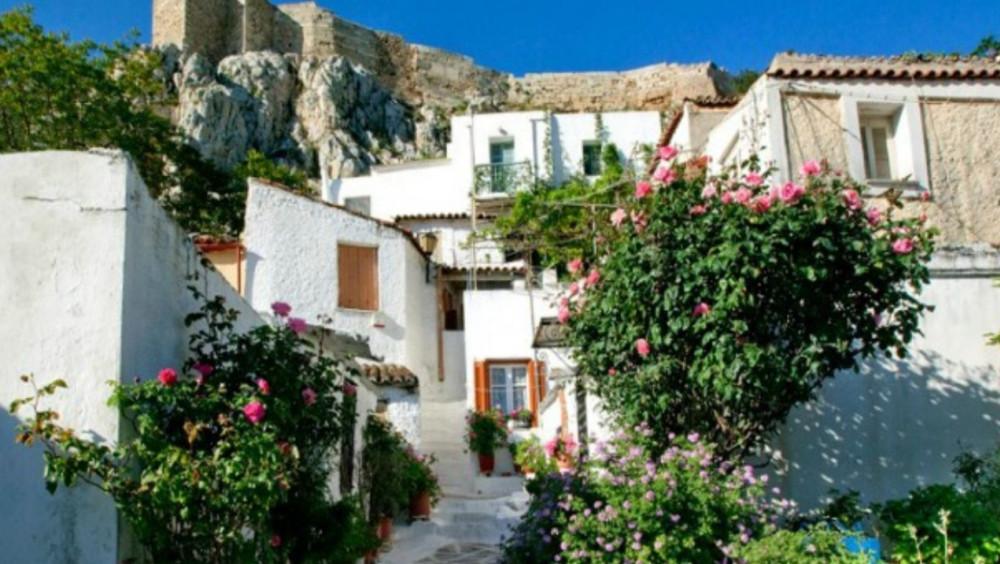Let' s dance together
Anafiotika is a significant and unique neighborhood of the historical center of Athens. In the area, which is in close proximity to the Acropolis of Athens, populations with diverse background- from workers to artists and fans of the artists- used to interact. Anafiοtika is a region, built up in the way cycladic villages are constructed, is closely related to the flourish of the “New wave” music as it was a type of music which was performed in the well-known to the Athenian public, boîte. These places of gathering, for many years, served as meeting points where the values of democracy, inclusion, understanding, free expression were developed. In our project we pick Anafiοtika and its, boîte, in order to use that as a case study which has the potential to promote intercultural dialogue, stress the dynamic of memory, as well as the maintenance of collective memory, and underline the meaning of neighborhood, which used to be significant, with often healing features, in the Mediterranean culture.
The activities of the project are mostly related to the dance. Dance, similarly to boîte and neighborhood, forms an intagible cultural heritage aspect, that will allow the participants to set themselves in an open discussion in a spatial and temporal axis. Also, dance will invite the participants to better understand what free expression, inclusion, diversity, polyphony mean and solidarity; values which in modern Greece and Europe are more considered timely.
Anafiotika is a significant and unique neighborhood of the historical center of Athens. In the area, which is in close proximity to the Acropolis of Athens, populations with diverse background- from workers to artists and fans of the artists- used to interact. The area is primarily associated with the arrival, in the middle of the 19th century, of a workforce from an island of the Cyclades, which is called Anafi (and this explains the origin of the name of the region). Anafiοtika is a region, built up in the way cycladic villages are constructed, and because of its characteristic architect, it is described as an island in the centre of Athens. During the Asia Minor disaster, the population of Anafiotika was renewed with the arrival and settlement of refugees. Throughout the 1960s, the area served as a meeting place and expression of young artists, of the current music wave "New Wave" in the so-called boîte.
These places of gathering, for many years, served as meeting points where the values of democracy, inclusion, understanding, free expression were developed. In our project we pick Anafiotika and its, boîte, in order to use that as a case study which has the potential to promote intercultural dialogue, stress the dynamic of memory, as well as the maintenance of collective memory, and underline the meaning of neighborhood, which used to be significant, with often healing features, in the Mediterranean culture. Anafiotika as a tiny region/ neighborhood of Attika and boîte, which in French means box, both condense and include a sociocultural treasure related to:
- The preservation of small detached houses and the concept of neighborhood which has the potential to be transformed to an artificial family in the Mediterranean culture and way of behaving; and it can teach us about the bonds neighbors – in a wider extent- (should) have but also it can underline the meaning of solidarity.
• the value of free expression and pluralism
• The acceptance and coexistence of people with different backgrounds
The present project focuses on the area of Anafiotikia and aims to use the area as a model for improving the daily life of first and foremost young Athenean citizens (up to 25 years old) and in a wider extent European citizens who choose to live in an urban environment.
The activities of the project are mostly related to the dance. Dance, similarly to boîte and neighborhood, forms an intagible cultural heritage aspect. Dance is a complex phenomenon, reflecting culture, traditions, the use of human bodies, objects (such as costumes and props), as well as a specific use of music, space and sometimes light. As a result, many tangible and intangible elements are combined in dance, which serves as a tool for embodying Anafiotika daily life in the past.
Dance is a means of communication and expression and the goal of the main action of the project is to get in to bring youth in touch with the values that significant site of Attica has to offfer. Dance will allow the participants to set themselves in an open discussion in a spatial and temporal axis. Also, dance will invite the participants to better understand what free expression, inclusion, diversity, polyphony and solidarity mean; values which in modern Greece and Europe are considered more than timely.
The participant will speak through movement. They will come close through posture. They will form thoughts with a dance alone / all of them / together. The group of participants will be able to communicate their thoughts and concerns by experiencing the meanings which are encapsulated in Anafiotika.
A choreographer will design the main action of the program. The events will take place in the form of dancing groups. Each group after its experience will communicate to the other the feelings and ideas that observed and gained respectively. Surely one of the goals is the connection with space, time, body and art. We want to cultivate respect for the environment, for the natural space, for the space of others, for ourselves.
Undoubtedly, dance is a psychotherapeutic means, similary to the boîte and the neighborhoood, which leads the participants to stimulate the expression of internal emotional states, but also develop tight social bonds. Parallel to the dance activities, a photography workshop will take place in various areas of Anafiotika, having as ultimate goal the production of photos of the area through the lens and perspective of the participants. In addition, a tour as an introduction in the area will take place.
The dissemination of the actions will be done both through social networks and through the publication of a handbook including photos captured by the participants. The latter will be enriched by photographic material of the area during the 19th and 20th centuries as a result of research in public archives. Posters and flyers will be used for the dissemination of the project, t- shirts and tote bags will be offered to the participants
The experiential nature of the project aims the participants while leaving Anafiotika, to take with them a box (boîte) rich in content with "gifts" such as:
The importance of free expression
The importance of simplicity and spontaneity
The healing properties of dance and music
The polyphony and multiculturalism
The sustainability of the neighborhood, which has the potential to be turned into a family
The understanding of the area where the actions took place
The respect of social diversity
The significance of preserving cultural heritage
The project is the outcome of the collaboration of people with diverse background, like the Anafiotika region,
•A choreographer (who will be in charge with planning of the above actions)
• An Educator (who will be the coordinator of the actions and who will be in charge with social media, the material collection and the handbook publication)
• An Archaeologist (who will conduct the research in the archives)
• A Photographer (who will organize the photo workshop)
European dimensions
The “Let’s dance together” is a metaphorical project. It aims to communicate to young people the values that are connected to :
• The importance of free expression as principal aspect of democracy which is strongly promoted by the European Union
• The importance of simplicity and spontaneity, values which due to the complexity of the modern lifestyle tend to be disappeared from everyday life
• The healing properties of dance and music as means which can be adopted by the young people who aim to maintain and improve balance in their life.
• The polyphony and multiculturalism, as well as the respect of social diversity which only positive aspects have to add in a social environment.
• The sustainability of the neighborhood, which has the potential to be turned into a family. Neighborhood which can be applied not only in the narrow framework of a small region but also in the understanding and solidarity between neighboring countries during periods of need
• The understanding and observation of the area where the actions took place, the examination of the architect, the nature and the landscape. Young people who are often occupied in front of a screen need to focus for a while on the ‘real’ world and observe, feel and understand the natural environment and context in which they belong.
• The definition by young people of cultural heritage of a region is of great importance, but also significant is the preserving cultural heritage either tangible or intangible.


